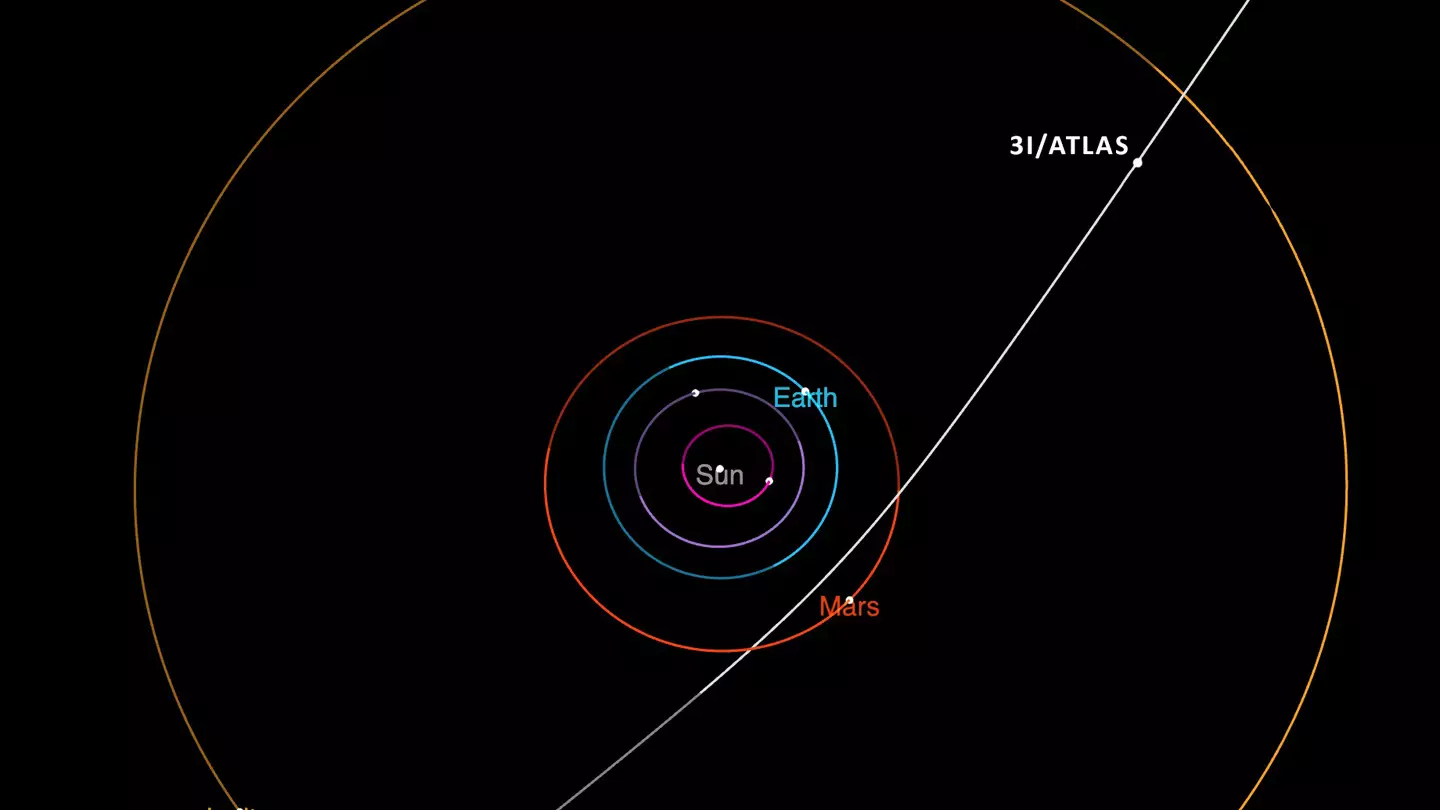A Harvard scientist has suggested that an unusual object from space could potentially reach Earth ‘by Christmas’.
For those keeping up with astronomical events, 3I/ATLAS has become a topic of global fascination and concern.
This intriguing space object, approximately seven miles in length, was first identified in July by researchers utilizing the NASA-funded ATLAS survey telescope located in Chile.
Remarkably, this is only the third known object believed to have originated from interstellar space, indicating it is not from our Solar System. Scientists deduced this because it travels at a velocity too rapid to be affected by the Sun’s gravitational pull, moving at over 41 miles per second.
Initially, there were speculations about its potentially hostile nature, with concerns about the consequences if it approached Earth too closely.

However, NASA has since quashed these fears, asserting that 3I/ATLAS poses no threat. Researchers suspect it is an interstellar comet, possibly composed of icy rock.
The US space agency has tracked the comet’s forecasted path, predicting it will pass closest to the Sun just before Halloween, continuing its journey into the depths of space, ‘never to be seen again’.
Yet, Avi Loeb, a Harvard physicist, has speculated whether 3I/ATLAS might not be a ‘natural’ object at all.
In a new blog post on Medium, Loeb posits that if this mysterious object is an alien craft, it could potentially reach Earth ‘by Christmas’. That’s a daunting thought.

Loeb discusses how no rocket launched from Earth could intercept the ‘comet’ before it reaches its nearest point to the Sun.
However, since its speed is significantly slower than that of light, sending a radio message is feasible. The crucial question is: should we attempt communication?
Loeb contends that attempting contact is only rational if 3I/ATLAS is more than just a rock, perhaps a technological spacecraft.
He points out two major concerns: Is there any intelligence aboard capable of receiving and interpreting our message? Could our message be perceived as a threat?
It’s intriguing to consider that AI might stand for ‘alien intelligence’ after all.
Humans have previously broadcast signals into deep space; notably, the Arecibo radio telescope sent a message to the Messier 13 star cluster in 1974.
However, that cluster is 22.2 thousand light years away, making 3I/ATLAS much closer, which could lead to a quicker response, thus making any potential contact more immediate—and potentially more perilous.
Given these uncertainties, Loeb suggests waiting until the object approaches its closest point to the Sun. If it behaves like a regular comet, it’s probably natural. If it maneuvers, we might be confronting something far more advanced. That’s when concerns may truly escalate.

